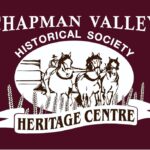A Duty Nobly Done
World War I, 1914-18
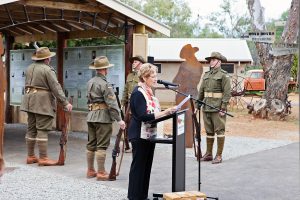
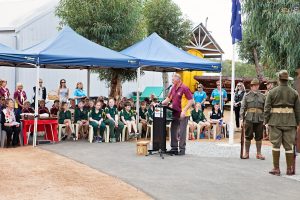
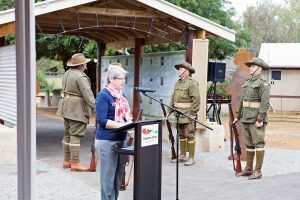
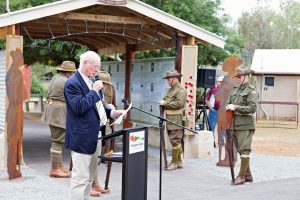
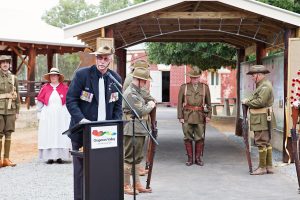
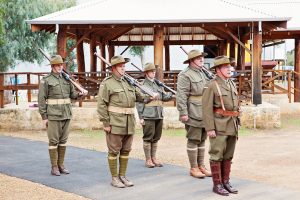
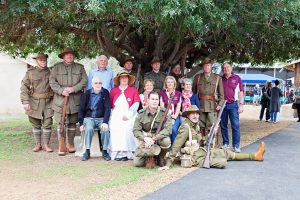
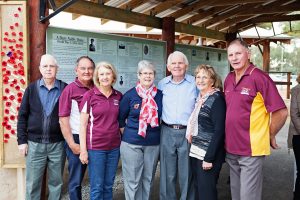
Over 140 men from the Upper Chapman district served in World War 1. In 1926 a memorial plinth was placed in the Nabawa Cemetery listing 36 names of local men who died in the war. It listed the surname and initials of each man.
During the Centenary of ANZAC 2014 to 2018, the Chapman Valley Historical Society erected a tribute to honour the fallen soldiers.
Careful research into each soldier was undertaken. During this process, a further six more soldiers, who had lost their lives in the war, were found to be listed on honour boards in the district. We have sought to tell something of each man’s story. Military records, embarkation details, photographs, letters, Red Cross material, newspaper stories and individual family information were researched to this end.
The Upper Chapman District, now known as Chapman Valley, was a much different place in 1914 to what it is today. The Upper Chapman Road Board District was established on 25 January 1901. Narra Tarra was thrown open for selection in 1910 and by 1919 was completely taken up. There was no lack of applicants for land. A number of men, who were descendants of pioneer settlers on the Greenough Flats, had married and were unable to obtain land at Greenough and therefore had to look further afield. There were also applications from former workers on the goldfields who wanted to secure land on which they could settle permanently with their families.
In 1910, a railway line was constructed to link the district to the port of Geraldton. In general, the potential settlers were of an ideal type for pioneering work. They were experienced in hard work and harsh living conditions having engaged in a diversity of employment including mining, railway construction, operating horse teams between the port and the goldfields, well-sinking, fencing and station work. Due to the unprofitable nature of the early agricultural industry, many farmers were forced into taking other work on such as shearing and sandalwood cutting. Our soldiers provide a glimpse of this life in the district.
The ages of the men who enlisted for war, ranged from the youngest at 18 to the oldest at 40. Many were single but some were married with children. Some were local Western Australians, some from other parts of Australia, a number had come from Great Britain, one from India and another from Finland (under Russian control). At least one soldier was identified as being part-Aboriginal. Sadly three sets of brothers were killed in the conflict: the brothers Pascoe, Meginess and Salter.
These soldiers fought in most of the battlefields of the war – at Gallipoli and in the many different battlefields in France and Belgium known as the Western Front. One died from an illness contracted before he could join his ship in Perth. Sixteen still lie where they fell, in unknown graves, their names listed on Memorials marking the battlefields. More than half of the soldiers were killed in 1917, four on the same day, 11 April 1917 during the Battle of Bullecourt. All a long way from home.
The Opening of the WWI Fallen Soldiers Tribute
6th September 2017
The opening of the WWI Fallen Soldiers tribute with 11th Battalion Living History Unit marching in, Pam Batten OAM, is the MC and Warren Kennedy, President of the Chapman Valley Historical Society gives the opening speech.
Jenny MacKay gives an overview of the research into the WWI Fallen Soldiers tribute from the Upper Chapman District now known as Chapman Valley.
Richard Williams recites his poem The Waler.
Dr John Sharpham reads the names of the 42 Fallen Soldiers from the Upper Chapman and the students place a poppy for each of the fallen on the tribute.
Opening of the WWI Fallen Soldiers Tribute by Northampton RSL President Bevan Suckling, thank you speech by Shire of Chapman Valley President John Collingwood and The Ode read by Ian Heberle, past President of the Geraldton RSL. Last Post by Jackie Simkin of Northampton.
Special thanks to David Weston for being our videographer and Renaye Stokes our photographer at the opening of the WWI Fallen Soldiers Tribute
